Roman Civilisation Sources 1 -23
1/22
Earn XP
Name | Mastery | Learn | Test | Matching | Spaced |
|---|
No study sessions yet.
23 Terms
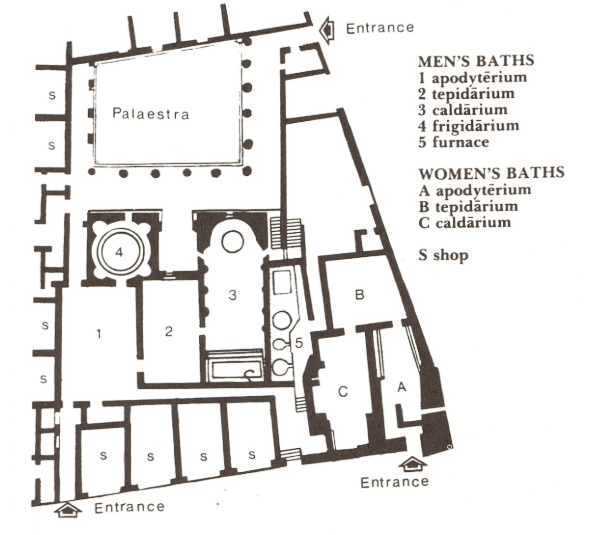
Plan of the Forum Baths, Pompeii
Bathers would go first into the palaestra (exercise area).
• Then they would leave their clothes in the apodyterium (changing room).
• Next they would move to the tepidarium (warm room) and sit talking on benches to prepare for the caldarium (hot room).
• Finally they could take a cold plunge in the frigidarium (cold room).

The palaestra, Stabian Baths, Pompeii
• The bathers entered this part of the baths first to exercise.
• It is a large open, grassy area, surrounded by a colonnade.
• Here they would greet friends and play ball games.
• Other popular sports included fencing with wooden swords, boxing and wrestling
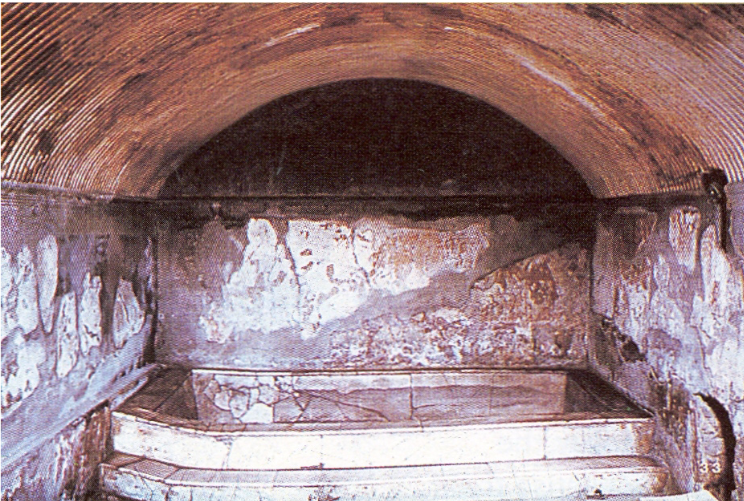
The hot tub in the caldarium, Forum Baths, Herculaneum
• The caldarium was the hottest room in the baths.
• At one end there was often a hot bath in which bathers could relax.
• The ceiling has grooves to carry away the condensation caused by the heat.
• Here the bathers could be massaged or scraped clean by a slave.
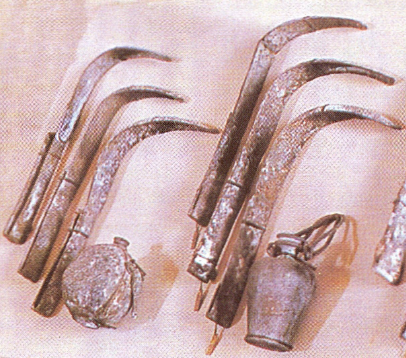
Strigils and oil bottles
• These items were used for cleaning bathers in the hot room (caldarium).
• First a slave worked the oil into the skin.
• Then he removed the oil and dirt with a strigil, a blunt metal scraper.
• Finally the bathers rinsed down in cold water.

Seneca describes the atmosphere in the baths
• A visit to the baths was a chance to socialise as well as to get clean.
• Romans met their friends at the baths during the afternoon to chat and do business.
• Bathers could take exercise and buy snacks.
• Other facilities on offer included massage and hair-plucking.
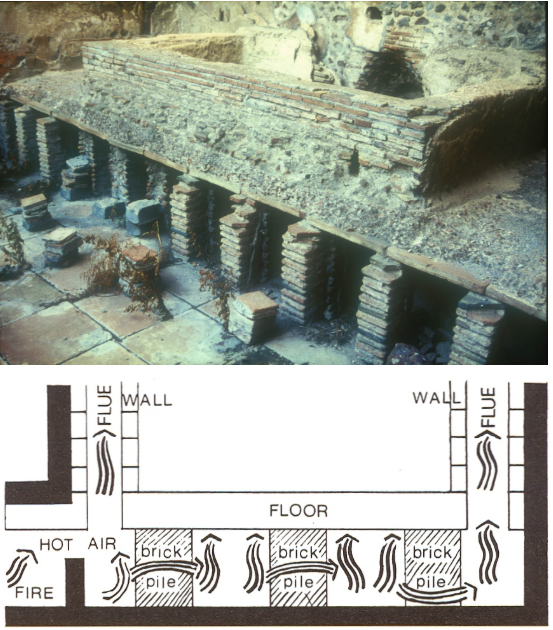
The hypocaust in the Stabian Baths
• A wood-burning furnace, stoked by enslaved people was placed below floor level.
• Air from the furnace circulated between the brick pillars, which supported the floor.
• The hot air heated the floor and the tank of water for bathing above it.
• Flues in the walls enabled heat to pass up through them as well.
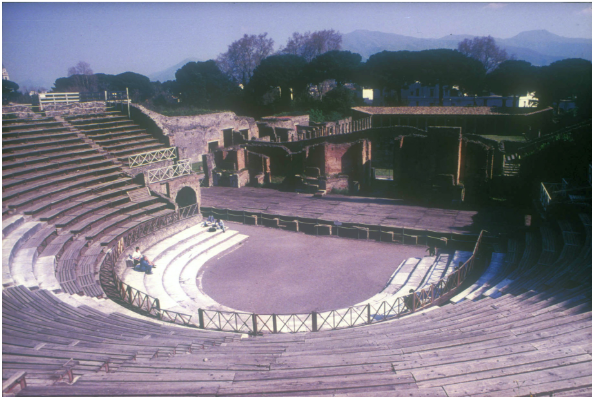
The Outdoor Theatre, Pompeii
• The semi-circular shape meant that everyone could see the stage.
• Seats were made of stone so spectators often brought cushions.
• The best seats at the front were reserved for town councillors and other important guests.
• To keep spectators cool a large awning was suspended across most of the theatre.
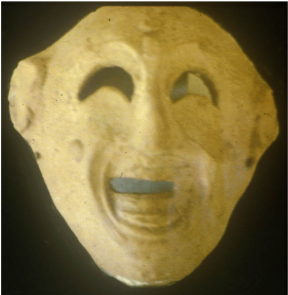
A mask from the theatre
• Masks were made of linen, covered in plaster and then painted.
• Characters were instantly recognised by their masks.
• Masks helped to magnify the sound of the voice.
• Female characters, always played by male actors, could be identified by their masks.
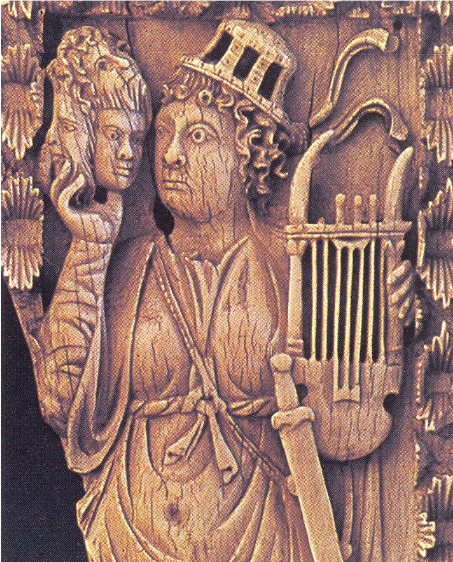
A pantomime actor with his mask
• Pantomime was a mixture of opera and ballet performed by one masked actor, who mimed all the parts.
• He was accompanied by an orchestra and a chorus which sang the lyrics.
• Plots were usually serious and taken from Greek mythology.
• Pantomime actors needed skill and stamina. They had a large following of fans.

Pliny writes about Quadratilla’s troupe of actors
• Plays were performed at religious festivals such as the sacerdotal games. This would have been a public holiday.
• Some wealthy people like Quadratus’ grandmother had their own private theatres.
• Actors were generally freedmen.
• Dancing was an important part of the pantomime actor’s performance
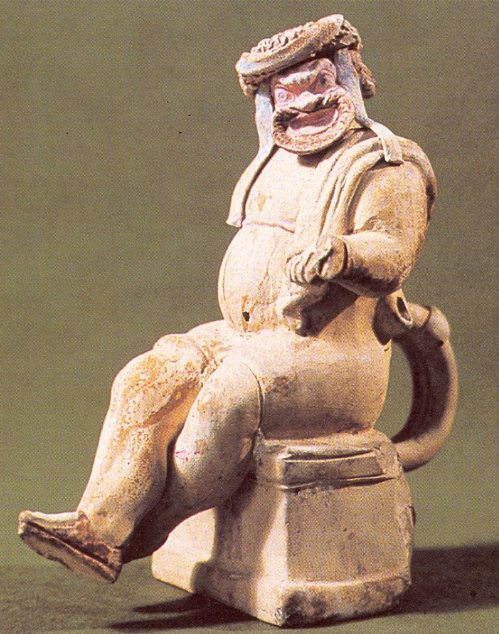
An actor playing the part of an enslaved person is sitting on an altar
• The enslaved person is seeking sanctuary on the altar.
• The actor may be taking part in a comedy, a vulgar farce or a short one act play about Italian country life.
• These short plays used a few familiar characters who were recognised by their strange masks.
• Two such characters were Manducus, a greedy clown, and Pappus, an old fool.
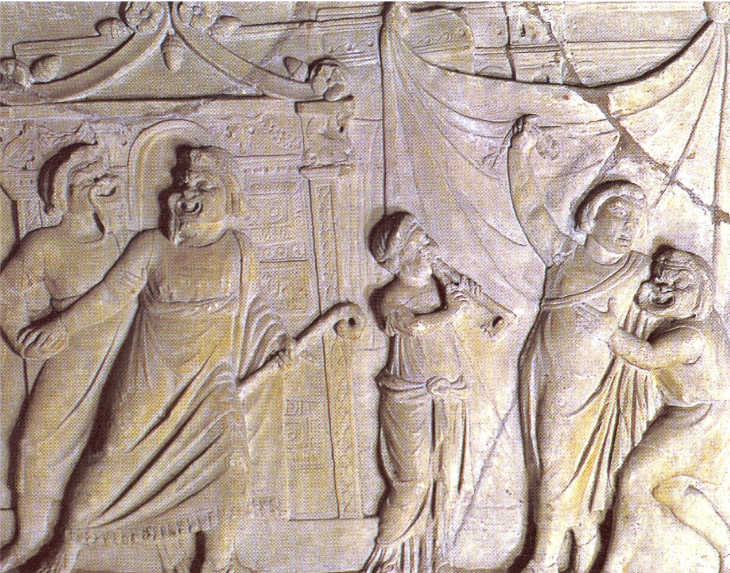
A relief showing a scene from a comedy
• Comedies like the one shown here had familiar characters, complicated plots and witty dialogue.
• On the left of the scene a father sees his son coming home drunk from a party but is prevented by an enslaved person from intervening.
• On the right another enslaved person is propping up the drunken son.
• In the centre is a musician playing the double pipes.
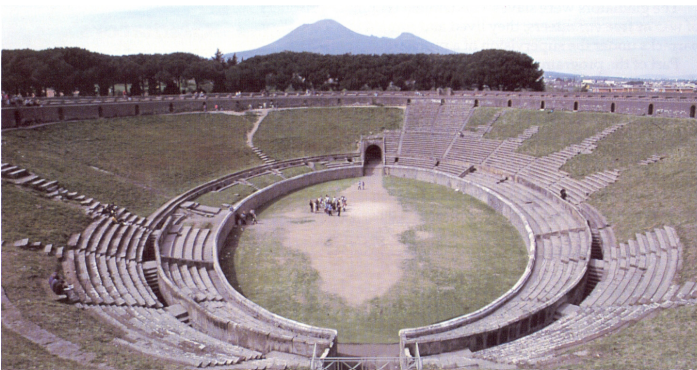
The amphitheatre at Pompeii
• This oval shaped building had no roof.
• Rising tiers of stone seats surrounded the arena.
• The entrances at opposite ends were for the gladiators to enter, in pairs. On the long side was a special box for the sponsor of the show.
• The building held about 20,000 people.
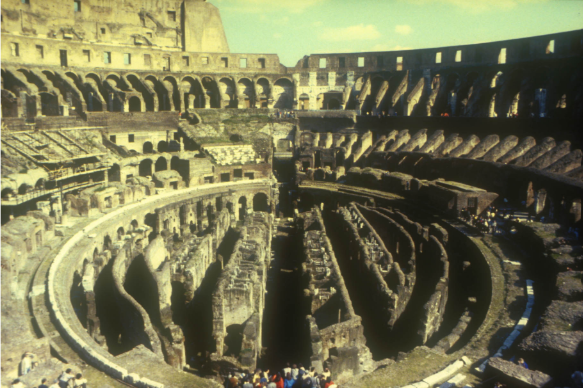
The interior of the Colosseum, Rome
• The sandy floor of the arena, which soaked up the blood of the victims, has disappeared.
• There was a wall around the arena for the safety of the spectators.
• In the centre are the remains of underground passages and the cages where the animals were kept.
• The animals passed along the narrow passages and were brought up into the arena by lifts.
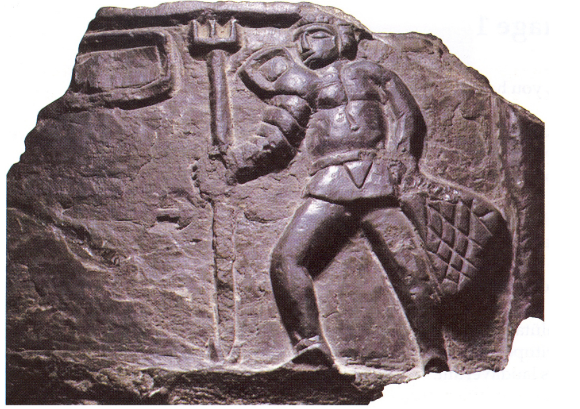
A retiarius
• The retiarius was armed with a trident and a net.
• He wears a shoulder guard on his right shoulder.
• Gladiators fought in pairs, and the contest between the secutor and the retiarius was the most popular because of the difference in their armour.
• The secutor was heavily armed, but the crowd admired the nimbleness and skill of the retiarius

A graffito recording a fight between a Thracian and a murmillo
• Gladiators were enslaved persons, condemned criminals, prisoners of war or free volunteers.
• They lived in a barracks or school under a professional trainer.
• A Thracian was armed with a curved sword or dagger and a round shield.
• A murmillo carried a sword and a rectangular shield. He wore a helmet with a crest shaped like a fish

An equal contest between two gladiators
• Sometimes the defeated gladiator was spared if he had fought well.
• He first had to raise a finger to ask for mercy.
• The wooden sword was a high honour and meant that the gladiator need never fight again.
• A palm branch was usually given to the victor. He might also receive gifts of money from his admirers.
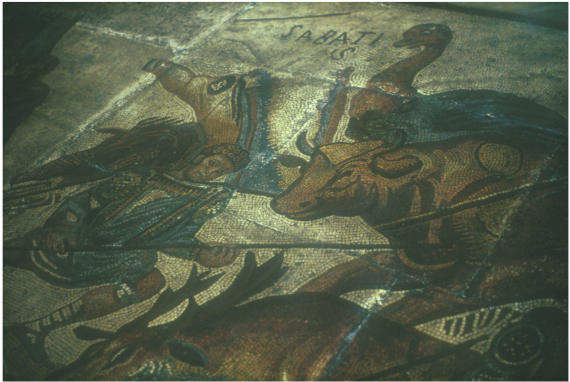
A beast fight (venatio)
• This shows a specially trained beast fighter (bestiarius).
• He wears light clothing so that he can move quickly.
• He fights a deer, a bull and an ostrich, instead of the more exciting lions and wild boar.
• Animals were released from cages below the arena and the fight ended when they were all dead.
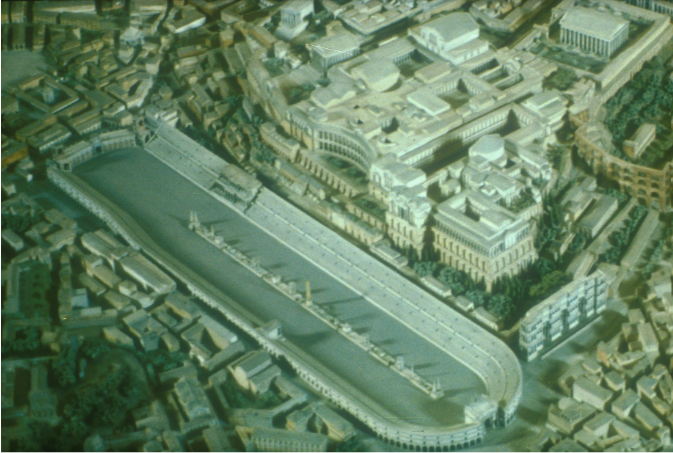
A model of the Circus Maximus
• The gates from which the chariots started the race can be seen at the back on the left.
• Down the centre of the track is a barrier or platform (spina) around which the chariots raced.
• The official box for the sponsor of the races is on the far side of the track.
• The Circus Maximus could hold 250,000 spectators.
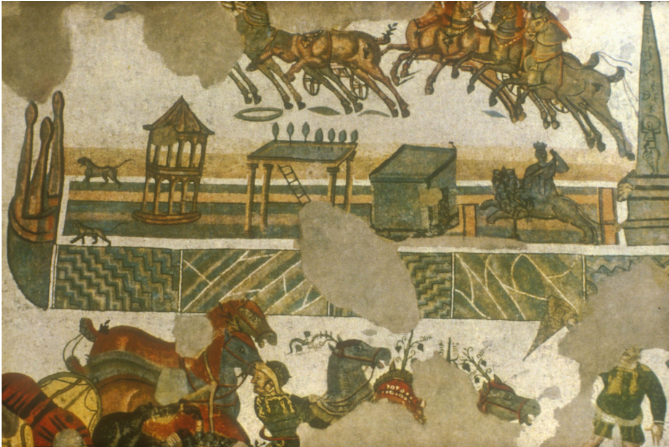
A mosaic showing the Circus Maximus
• The chariots are racing around the track.
• There were 24 races in a day’s programme. Each consisted of 7 laps totalling about 5 miles and lasting 15 minutes.
• Turning posts (metae) marked each end of the central platform. Here three are visible at the left hand end.
• Each time the chariots completed a lap, one of the 7 wooden or marble eggs, which had been hoisted above the central platform, was lowered.
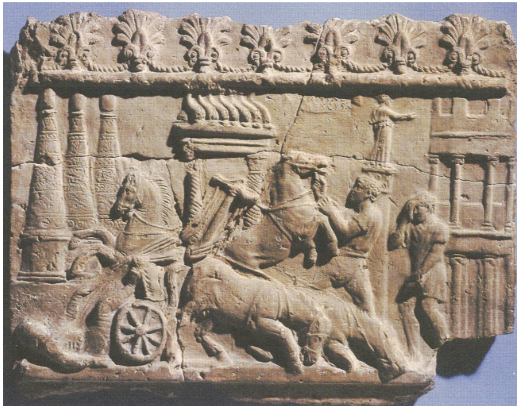
A crash during the race
• The charioteer on the left has fallen from his chariot.
• He may have taken the bend around the turning post too fast.
• While racing, a charioteer had the reins wound tightly round his body.
• He carried a knife to cut himself free in the event of a crash.

The excitement at the races
• Chariot racing was the most popular form of public entertainment in Rome.
• Money changed hands over bets.
• There were 4 teams competing regularly – Greens, Reds, Blues and Whites. Charioteers wore tunics in the team colour.
• Individual teams consisted of one, two or three chariots, each with four horses.

Pliny dislikes the Circus Maximus
• The city of Rome was quiet as everyone was at the Circus. It was a public holiday.
• Pliny was a writer who took advantage of the quiet to get on with his work.
• The ‘bit of cloth’ is the charioteer’s tunic, which was the colour of his team.
• Pliny thinks that people would support any charioteer who was wearing the colour they supported.